Back off. You’re selling to millennials. Your marketing message is less valuable than a Snapchat selfie that will soon self-destruct.
See, the secret to selling to millennials, is not selling to them. You empower them to do it to for you—with customer content marketing or the popular phraseology, user-generated content.
User-generated content sounds kind of lame, doesn’t it? It’s not.
I’ll grant you the term itself, and its obligatory abbreviation, UGC, is yet another clunky marketing term. However, unlike many dreadful phrases spawned by the endlessly dynamic world of new media marketing, it’s easy to understand.
User-generated content is content generated by… users. Duh. The most common examples are videos, images, comments, ratings and reviews. But who knows what users will generate in the years to come?
The phenomenon is relatively new. Of course, you could say the act of a consumers creating content based on a brand experience and sharing it in the media might be as old as the letter to the editor.
However, thanks to the ubiquity of smartphones, a pixelated UGC revolution is taking place before our eyes. This generation doesn’t write letters to the editor. They rate things. They post pics and vids. They snap, gram and tweet. (I’ve had to teach my spell-checker about 10 words so far while writing this post.)
The implications are colossal.
Marketing for the people, by the (young) people
Yotpo, a company that rose to prominence by introducing services for gathering and using reviews, brought some interesting research to bear in its Customer Content Marketing 101 report (2015), particularly about the millennial generation.
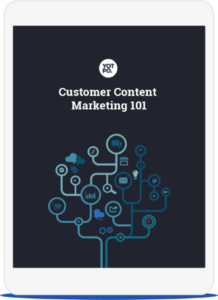
- Those born from the early 1980s to early 2000s represent the biggest generation of consumers in history.
- 45% say they aren’t interested or compelled by content from marketers (cited from a study by Tumblr, Yahoo, Razorfish and DigitasLBi)
- About 30% of their total media consumption is UGC.
- They trust information they receive through UGC 50% more than information from other media sources.
- More than 50% of millennials consult UGC before making big purchases.
- UGS is 20% more influential on their purchase decisions than other types of media.
Brands now recognize the consumer’s decision-making process works differently than years past. They’re far more inclined to ignore the messages brands put out, and instead, tune-into the opinions of their peers.
Here are more research nuggets on the power of user generated content:
- 59% of millennials say they use UGC to inform their purchase decisions about major electronics. That’s followed by cars (54%), major appliances (53%), mobile phones (46%), hotels (45%), and travel plans (40%). (Crowdtap)
- 70% of consumers place peer recommendations and reviews above professionally written content. (Reevo)
- 65% of social media users from ages 18 to 24 consider information that’s shared on social networks when making a purchasing decision. (eMarketer)
- Brand engagements rise by 28% when consumers are exposed to both professional content and user-generated product video. (comScore)
[I thank DMNews.com for collecting the data above.]
So should marketers just step aside?
On the contrary, marketers should step it up, “it” being UGC strategies. But here are two interesting findings from Forrester research:
- 72% of marketers only started using UGC in marketing campaigns in the past two years.
- 55% of companies are still figuring out how to properly utilize UGC in their campaigns.
In a way, a cloud’s hung over UGC. Many link it with low-quality and potentially damaging content. So instead of embracing UGC, many marketers cling to their agencies to create carefully crafted brand messages.
But their eyes are opening fast. Most brands, especially in the ecommerce space, are keen on the idea of UGC and optimistic about its potential effects. The problem they don’t have a handle on how to inspire the creation, use, and sharing of UGC and leverage it effectively.
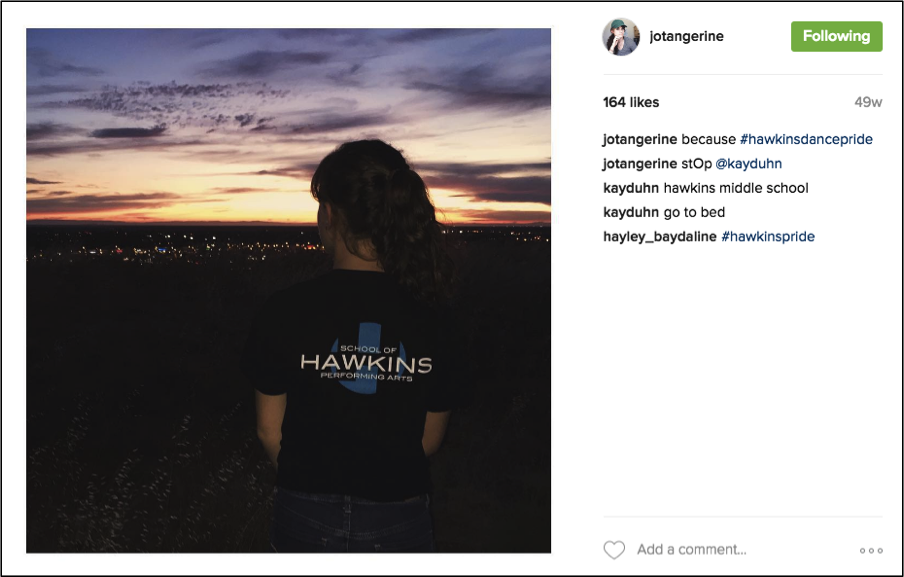
Think the quality of Instagram shots is low? Think again. My daughter Leah (and many of her teen friends) has a tremendous eye. It’s easy to imagine this pic being used by her dance academy, Hawkins School for Performing Arts.
The sweet spot is Instagram
Because you can’t include links in your posts, I’ve always dismissed Instagram as a real marketing play and considered it strictly a fun social outpost. I never really “got” it.
I do have Instagram on my phone. I just checked. I have 56 posts (mostly of my dog). I have 210 followers (compared to 37K Twitter followers). Starbucks, by contrast, has 10.6 million followers. They make very good-looking drinks, I guess.
Never mind me, Instagram has 500-millions users. 30% of them have purchased a product they’ve discovered there. Its benefits for ecommerce companies include:
Serious engagement—Instagram drives more engaged traffic than any other social channel. Research shows that when comparing time on site from various social channels, Instagram beats Facebook, Pinterest, and YouTube.
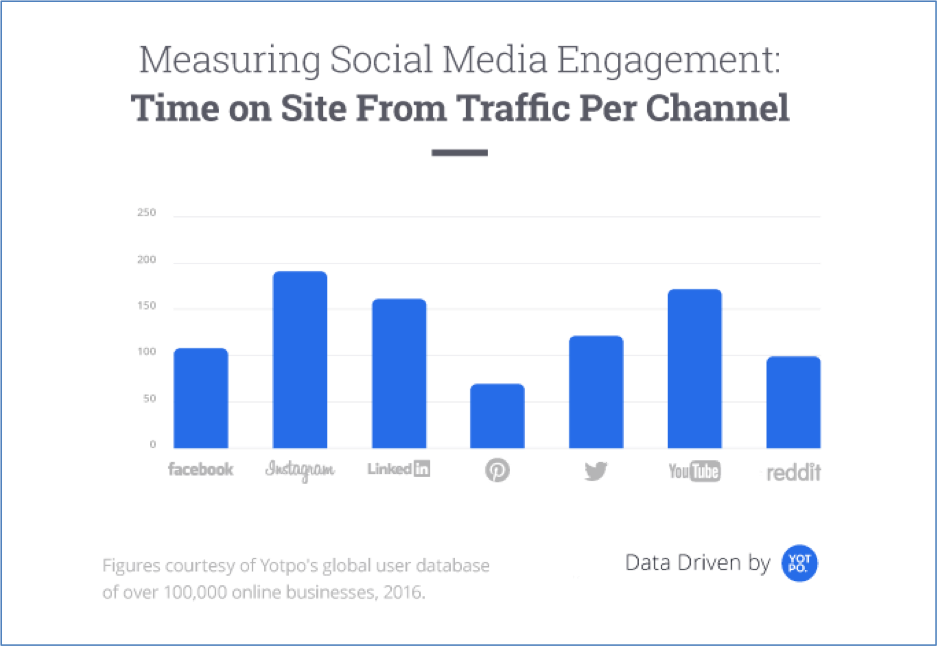
Instagram content drives more engaged traffic than other visual social media channels.
Free photos—You can publish more content when it’s created for you. Instagram photos are user-generated. Customers constantly create and share their images. With their permission, you can use their images for your marketing.
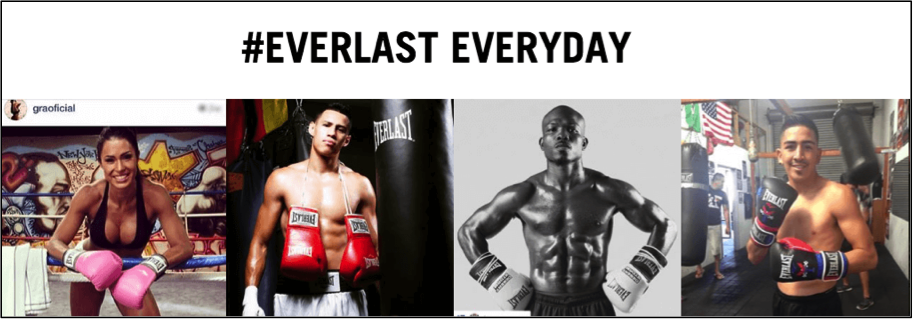
On their homepage, Everlast showcases photos taken by their customers in the gym.
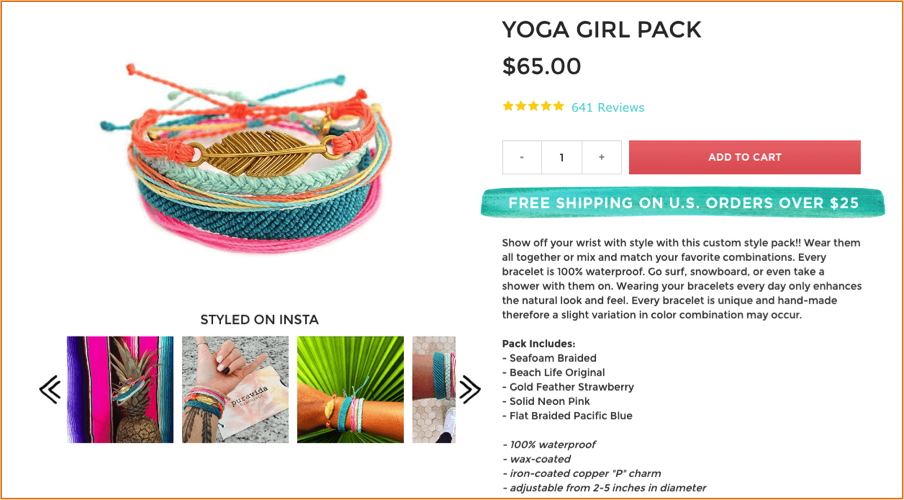
Pura Vida shows Instagram photos on their product pages, where they display a gallery of photos of from customers.
Authenticity—77% of shoppers prefer authentic customer photos to professional shots.
An ad test bed—On Instagram, you can get feedback indicating how your audience will react to content before you invest in advertising.
Bring on the business
If you’re tuned-into social media, you’re probably aware advertising on Instagram became an option to all brands last year. Ads on the photo and video-sharing network won’t look remarkably different than posts, but will include a “Sponsored” label and call-to-action button.
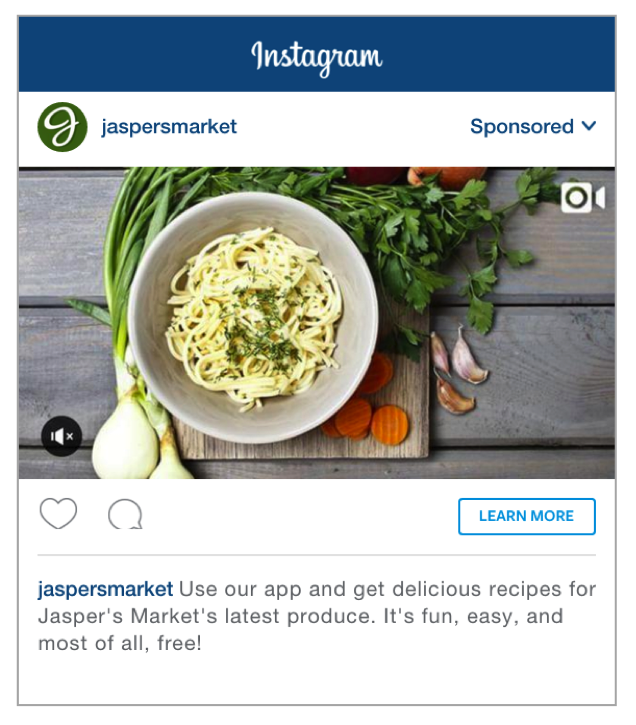 CTA buttons are optional. If you choose to include one your options are generic, but varied: learn more, apply now, download, and more.
CTA buttons are optional. If you choose to include one your options are generic, but varied: learn more, apply now, download, and more.
Here’s a very complete how-to on Instagram advertising from HubSpot.
Want to get serious about Instagram?
If you’re ready to try Instagram advertising or simply curate Instagram images on your website, Yotpo is ready to help power your efforts. The company has released a new tool to help brands leverage the power of Instagram photos.
You use the tool to collect Instagram photos and secure the rights to use them. You can tag your favorites to showcase them on your product pages, share via social channels, or feature them in Instagram ads.
Instagram has been a fun, creative and interactive play space for millions of click-happy social sharing addicts for several years. This past year, it’s also become a wonderland for consumer brands.
eCommerce companies have discovered they don’t always need celebrities to endorse their products. Anyone with a smartphone and a point of view can be influential. Recent trends show that more consumers make purchases based on what they see in their Instagram feeds.
As such, ad dollars are flowing to social media-based campaigns. You’ve no doubt heard it before…
Consumers seldom trust messages they get directly from brands. What do they trust? Sign onto Instagram and see.




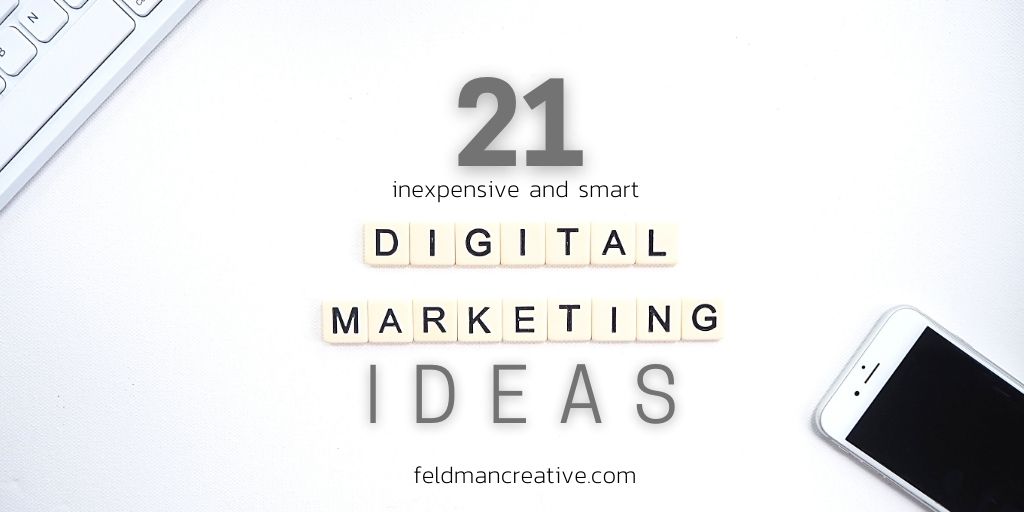
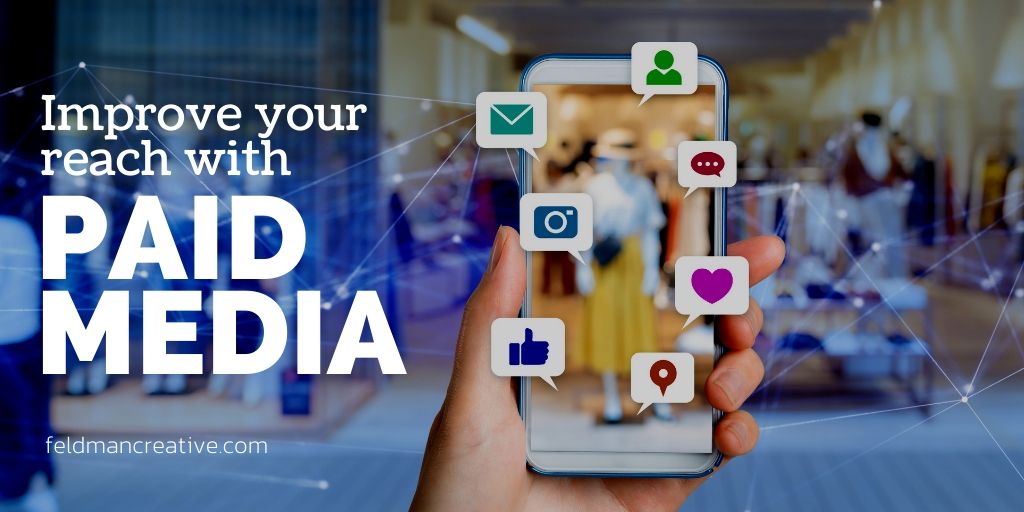
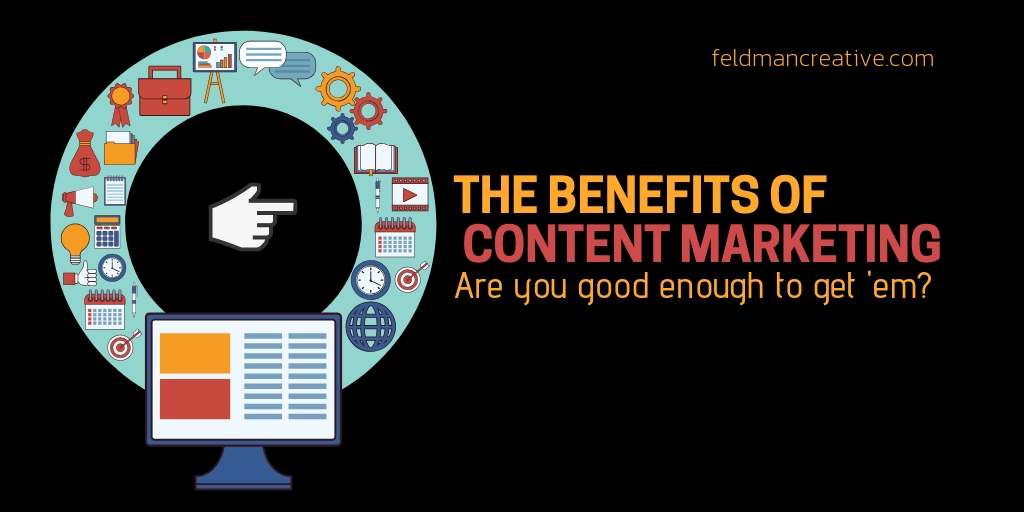
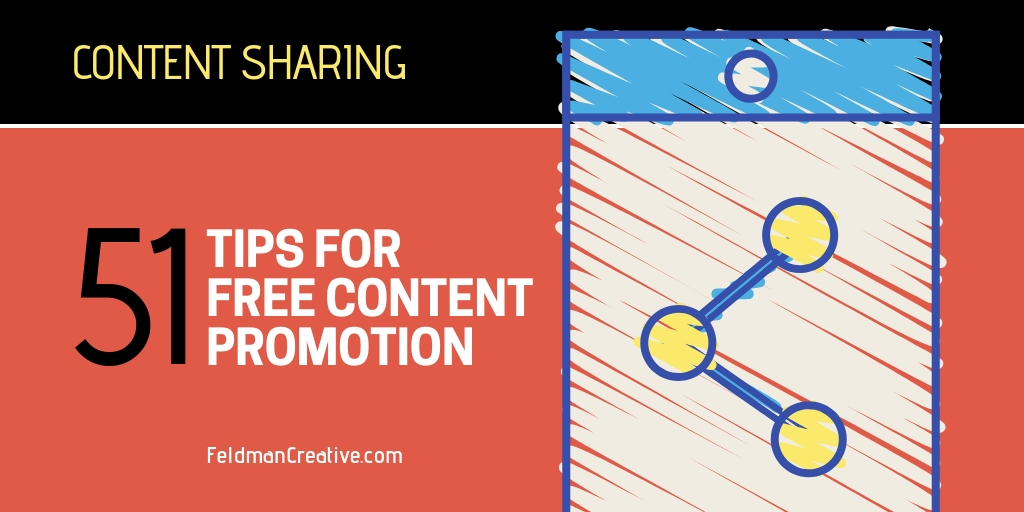
Comments
Bryce Read
Hi Barry, great post. Is there a tool like Tweetdeck to schedule instagram posts? Thanks, Bryce
Barry Feldman
Yes, it’s been built into Buffer and Hootsuite.
Bryce Read
If you put a URL in does Buffer strip it back to its own one? I.e you lose the identity of your own one? Thks
Barry Feldman
Not sure. URLs aren’t clickable on Instagram anyway.
Jill Booth
OK, I’m really going to do it – today! Thanks for the push, Barry.
Barry Feldman
What is it you’re going to do? Report the details back to us here please.
Jill Booth
Persist with Instagram!
Yasmin Khan
Hi Barry,
Love the post. As a millennial, I can attest that I do spend a lot of time on Instagram, especially when it comes to following brands. A wedding dress designer is just so much more interesting on IG than on Twitter!
As a marketer, though, the lack of links is a bit annoying, especially when it comes to promoting blog posts, but overall, there’s value there and money to be made. That said, IG has been consistently rolling out different upgrades that have made it more brand-friendly, so I wouldn’t be surprised if links within posts came sooner or later.
I’ll be keeping an eye on it!